Review: Motorola ic402
May 3, 2007, 5:28 PM by Eric Zeman
Our in-depth review of Sprint's first CDMA / iDEN hybrid phone, the ic402 Blend, along with its brother Buzz. NEW: Video Tour added
Form
Is It Your Type
iDEN handsets are not known in the cell phone industry for their sense of style. Rather, they forgo the slick designs of other phones for a more practical, down-to-earth approach. With their walkie-talkies, iDEN phones are often the handset of choice for blue or gray-collar workers who need an able workhorse of a phone that can withstand the daily rigors of the hard-knock life. But sometimes the hard-hat set needs something more. By combining key features of both iDEN and CDMA technologies, the Motorola ic402 Blend offers a taste of both worlds in a re-packaged and somewhat more hip design.
Body
If there's a defining feature of Motorola iDEN phones, it's their bulk. There's simply no polite way to say it. iDEN phones are typically thick, brick-y blocks of hardware. The ic402 is different. Like the ic502, it lacks the rubberized protective strips and chunkiness that are typical of iDEN phones and trades them for a sleeker, more stylish design that is found on today's standard feature phones and the iDEN phones used by Boost. But is it sexy enough?
When you first take the ic402 out of its box, what strikes you is how "normal" it looks. Putting it next to an LG VX8300 clamshell we had laying around, the two were surprisingly similar in appearance and dimensions. The lines in the ic402's plastic almost emulate a spaceship or race car. The silver, gray and black color scheme adds to this impression. While it's not as trim as some phones, slipping the ic402 into your jean pocket isn't unbearable, even if you wear tighter jeans. Still, it is slighter thicker than the average clamshell, and this is most noticeable when you're trying to grip it in your hand. Getting your fingers all the way around it is difficult even if you have larger hands.
The other thing you notice is how solid it is. Not that this means it is heavy. In fact, the LG VX8300 was heavier. Holding it in your hand, though, it feels strong, like it can take a lickin' and keep on tickin'. The external plastic shell is smooth. Nothing juts out or sticks your palm, no seams catch your skin. It's put together tight. There was absolutely no side-to-side play with the hinge.
Taking a quick tour around the outside, you immediately notice that there's no external display, which was present on the ic502. This means you'll have to open it to check for messages, check the time, see what sort of signal strength you have, etc. The ic502, adds a monochrome external display, allowing you to check your status, as well as make walkie talkie calls, with the lid closed. The left side of the ic402 hosts the rubber volume keys and Push To Talk (PTT) button, which has little nubs on it to help your finger find it and grip it. There are no buttons at all on the right side. The top is where you'll find the speakerphone key, a rubberized hatch protecting the headphone jack, and the Smart Key. The external antenna protrudes from the top about an inch, and can be pulled out an additional 3 inches. The USB charge port is located on the bottom of the phone, and is also covered by a rubber hatch. The front and back are simply smooth plastic.
Opening it up, you'll find the screen and typical iDEN keypad. The screen itself is smallish and the keypad is just huge. All the individual keys are large and spaced far apart, which forces your thumb to travel a lot to punch in numbers and slows you down. It was obviously designed with people who might be wearing gloves in mind. Attempting to compose text messages swiftly was not entirely successful, as we were faster on other keypads.
The keypad itself is ever-so-slightly recessed from the surface and the keys are flat with no texture to them The keys feel a bit cheap and make an unpleasant "clacking" sound when you press them. The action was minimal and feedback was acceptable, but not great. The loud sound provided more feedback than what you feel through your thumb. The D-pad is a 4-way button that is also large. Your thumb really has to move around to reach all 4 directionals, which makes for inefficient navigating. The central menu button is small, by comparison, and is the only button on the phone that is difficult to interact with. Considering how large the rest of the keypad is, this really sticks out, and wouldn't seem to be all that usable for people wearing gloves.
The Three S's
Screen
The screen on the ic402 is small. We'd go so far as to say it's a sub-standard size compared to the typical feature phone. On top of its small size, it has low resolution of 128 x 160 pixels and this drags down the experience of using the phone. All the icons and menus are pixelized and it makes you think you're using a phone from a few years ago. In other words, the screen comes off cheap looking. The one thing we will say about the screen is that it is very bright and has high contrast. It was easily seen when outdoors in direct sunlight. All the menus and icons were legible in the sun, and we had no problems navigating the ic402's features. This also means using it in dark environments was a snap.
Signal
SprintNextel is not known for its amazing coverage in the NYC metro area. The entire time we had the ic402, the CDMA radio never reached more than 3 bars of signal strength. This includes when we took it to the local SprintNextel store. Most often, it showed 2 bars. In my basement, it slipped down to 1 bar, and occasionally lost the signal altogether. Driving around elsewhere coverage was generally spotty, but remained at the 2-bar strength. We didn't miss any calls due to coverage, and the signal stayed at one bar while driving through the Lincoln Tunnel, which let us maintain a data connection.
The iDEN radio was a different story. With the ic402, it's an all-or-nothing deal. There's a little cell phone icon up in the top bar. If there's a check mark next to it, you have iDEN coverage. No matter how hard we tried, we couldn't find a spot that was without iDEN coverage. We even drove up into the northern hills of NJ, and still there was a signal. Needless to say, if and when the CDMA radio can't find a signal, as it did up in them thar hills, you can fall back to the iDEN radio for PTT calls.
Sound
The polyphonic ringers and ringtones we downloaded sounded very poor on the ic402's speakers at all volume levels. Ringtones were so garbled and static-y that they were best not used at all. Despite the poor ring quality, the ic402 could be quite loud.
Call quality was different. Using the walkie-talkie produced clear, crisp conversations that were very audible over the speakers. We performed a coast-to-coast walkie-talkie test and the quality of the call was superb.
Making regular phone calls from the ic402 led to average results. We heard some static every now and then, and a fabulous echo once, but otherwise call quality is consistent with other SprintNextel phones we've tested. The ear piece speaker performed well enough, but it was far from dazzling. It was loud enough to be heard in noisy environments, but the quality degraded noticeably at higher volumes. It's obvious that Motorola wants users of the ic402 to use the walkie talkie or speakerphone if they're in loud environments, which suits construction sites better than noisy subway platforms.
Battery
Battery life on the ic402 was short. You won't be going on any business trips, even brief ones, without taking the charger. Leaving the phone in standby and not touching it at all drained the battery is just two days. Using the phone regularly for phone calls, walkie-talkie calls, browsing the Web and sending text messages drained the battery in 1.5 days or less. People who intend to use the phone heavily every day will need to charge it each night.
Basics
Menus
Because the ic402 is a bare bones phone, it takes about 3 seconds to figure out and use the menu system. When the phone is first opened, the screen shows 5 menu selections that correspond to each of the 5 possible D-pad buttons. Up for messaging, right for content, down for call log, left for the calendar, and center for the main menu. The soft keys will jump you directly to contacts and messaging. Of course, this can be changed, slightly.
Using each of these menu features is simple and direct. The ic402 has a truncated feature list, and this correlates to short menus. It's rare that you select a menu item and are presented with more than 3-5 choices in that menu. Three seems to be the average. This equates to quick navigation as there simply aren't a lot of menus to explore.
Hitting the center of the D-pad takes you to the main menu screen and lists all the major selections you'd expect: notes, messaging, contacts, PTT, call log, Web browser, tools, content and settings. Each of the icons performs a little animation as it is scrolled over. The menu can be seen in grid, list or tabbed views. The grid view is the default setting. In both grid and list views, you can use the keypad for shortcuts to the menu selections. This is not true in the tabbed view. You have to scroll sideways to select each menu item, which will appear as a large icon in the center of the screen as you scroll over it. The tabbed view resembles the Verizon Wireless standard UI a bit, but there are few options under each tab. Users can customize the 5 main D-pad selections, but that's about all the leeway you have.
As expected, the settings menu has the largest number of selections in it and is the most extensive. Using the D-pad is intuitive in making selections and adjustments and there are no surprises. One thing of note in here is that some of the selections have quick pull-down adjustment tabs. For example, most selections just state what they are, like "Greeting Banner." If you want to change the banner, you select it and it takes you to another page where you make any changes. Others, like "Menu Style", feature a visible drop-down menu that you can select, and it shows you the two or three choices you can make without jumping to a new screen. This helped speed up making simple adjustments to the phone.
Calls/Contacts
There are several ways to reach out and touch someone with the ic402. First and foremost is the regular phone. Using the ic402 for its intended purpose is a simple and direct experience. Hitting the "talk" button brings you to the list of your most recent calls. From here, you can select a number, hit talk again, and be on your way. You can also hit the left soft key to dive into your contacts. Once you choose a contact, simply hit talk again and you're golden.
Holding the phone to your ear is comfortable and most calls were loud and clear. While in a call, the left soft key is the mute button and the right soft key is the options button. In the options menu, you can initiate a 3-way call, record the call and choose from several other selections.
The contacts application on the ic402 is actually quite extensive. SprintNextel assumes you'll be using this phone in a work environment, and stuffs each contact with 5 different numbers, plus a Walkie-Talkie number, email address, Web site and more. Each number can be customized using pull-down tabs to "mobile", "home", "work", etc.
Once you've selected a contact, the contact's main page gives you several options, including messaging. There's a tabbed menu running across the top of the contact's page that allows you to assign them to a group, add them to a meeting, or fill in some additional information about that contact. The one option we don't quite get is the second option, which allows you to add a picture of the contact to their page. The ic402 doesn't have a camera. The only way to add pictures of your contacts is to have them sent to you from another phone. Without a picture assigned to each contact, you get the same "Playskool" looking figure attached to each contact. From each contact, you can call them directly, send them messages or emails, or initiate a PTT session.
The PTT functionality of the ic402 is its hallmark. Though the process is a little awkward, and makes you feel like you're 10 years old again, the call quality of the walkie-talkie was crystal clear. Our coast-to-coast trial was flawless. The way it works is, you have to send your intended callee an alert to let them know you want to do the PTT thing with them. If the person does not have their phone on, you will be notified that they are unavailable. If they are online, they will receive an alert and be given the opportunity to respond to it or ignore it. Once they respond to the alert, you hold down the walkie-talkie button, wait for the triple chirp, and talk away. You have to hold down the walkie-talkie button until you're done talking. As with the walkie-talkies you used as a kid, it's a one-way experience. Only one of you can speak at a time. Since we're all so used to using cell phones, we did find ourselves interrupting one another and missing portions of the conversation because we were trying to talk while the other person was holding down their button. We're sure regular users of PTT phones have adapted to this limitation.
The default setting for the walkie-talkies is for the call to take place with the speakerphone. This is why you see PTT users walking down the street holding the phone a few feet from their heads. The call is loud enough to hear without holding it to your ear. In fact, it would be too loud if you put it next to your head. You can, however, choose to listen to the PTT call in the ear piece, and the experience was just as good. The benefit of PTT is that it avoids using minutes on your monthly plan. With today's plans allowing for so many minutes at reasonable prices, though, the advantage has clearly lost its significance.
Messaging
Sending or receiving text messages with the ic402 is a simple affair. Since it has no exterior display, you're alerted to new messages by the indicator light, which flashes orange. You can choose to have the message alert also beep or vibrate when a new message has arrived.
When you open the phone, the main screen will show a little message icon at the top. Once you open the messaging center, it launches the newest message immediately. Messages are easy to read on the bright screen. With the message open, you can choose to reply to it, or edit, delete, save it, or add the number to your contacts. One neat thing about the inbox is that each message is listed by contact from newest to oldest. It contains the message header (who from, what time) and under the header, the message itself scrolls to the left so you can read them without opening them up.
The messaging center contains a number of preset messages and it's no surprise that they are mostly work related, and say things like: "The meeting is canceled", or "I have to work late". Motorola apparently assumes users of this phone will not have a life. There are several personal preset messages at the very end of the list.
Since there's no camera on the ic402, you can't send picture or video messages. You can, however, receive them. The ic402 receives picture messages via a web link, which you have load in order to view a thumbnail. You can then view the larger image, and choose to download it to your phone. Once it's downloaded, you can set is as a wallpaper, set is as a photo ID, etc.
Extras
Browse/Customize
Browsing
The ic402 uses SprintNextel's 1xRTT network for data services. The browser automatically launches Sprint's portal, which lets you access the usual crop of news, sports, weather and stock information. Enter your zip code and it will automatically pull in the information most relevant to you. It also lets you access/manage your account and download ringtones, wallpapers, and themes. Reverting to the old-school 1xRTT data radio wasn't as painful as we imagined it would be. We were able to easily navigate to Phonescoop.com and Google, but something like CNN crashed the browser.
Using the regular keypad to input web addresses is an exercise in tedium no matter how fast you are at typing. We determined it's best to set up some regular bookmarks if you have a set list of pages you regularly visit. Sprint's portal was serviceable at providing a basic level of mobile Web browsing and pages actually loaded quickly. We weren't kept waiting too long.
Customize
We found no surprises when wading through the ic402's menus and attempting to customize the phone to our tastes. As we mentioned above, the main menu can be viewed in grid, tab or list configurations. The tabbed view was the least useful, in our experience, as you couldn't use the keypad shortcuts to make selections.
The D-pad could be customized to any 4 applications/short-cuts of your choosing. The left and right softkeys remained stuck at contacts and messaging, though.
The settings menu also lets you customize the browser and walkie-talkie features of the phone. These make most sense to enterprise users, or for companies looking to control what features the users can actually access. For example, the browser / PCS Vision capability can be turned on or off, and a Net Guard application can also be selected to control what sort of access the browser is allowed to have. It also lets you choose whether or not the phone can roam onto different networks. These features would help companies save money by preventing workers from using the phone in places and manners not allowed. Same goes for the walkie-talkie.
One small pet peeve. Under the display settings menu, it allows you to select what it calls a "Screensaver." As is typical in other CDMA phones, rather than a true screensaver, this actually means "wallpaper", or the background image you see on your screen. Just some weird nomenclature.
File Management
Personal applications, pictures, ringtones and more are all stored in a folder called "My Content." Anything you download from the Sprint Vision Store finds itself deposited in this folder. Users have access to about 5 MB of memory here, so you can't go hog wild downloading stuff. You do have some control over the applications, and can assign some small things like what order they are listed. Using this folder lets you easily customize and manage your content.
Other
Calculator
The calculator application is more usable than other phone-based calculators we've used. It uses a central control key that corresponds to the D-pad for basic functions such as adding and subtracting.

Calendar
The calendar is fairly useful on the ic402. Adding appointments is easy, and the date becomes highlighted in a different color once an appointment has been set for that date. Notifications can be configured to make sure you're not late for your appointments.
Clock
Since there is no exterior display, you will not be using the ic402 to serve as your watch unless you care to flip it open every time to check it. The clock is displayed in the upper-right corner of the screen. You can choose digital or analog, but nothing more than that. A basic clock for a basic phone. The alarm clock lets you set 5 different alarms, one for each day of the work week.
Video
Our video review shows off the ic402's size, speed and few of the features mentioned in this in-depth review. You can watch it here:
Or you can go directly to YouTube for more viewing and sharing options.
Wrap-Up
The ic402 from SprintNextel is a workaday phone. Its basic feature set, PTT capability, and semi-rugged styling belie its blue and gray collar roots. While it makes strides in being a more up-to-date and pocketable device compared to its older cousins, the ic402 is still an iDEN phone at its core.
For an iDEN phone, it's nice to have CDMA calling and data capabilities as well. The fact that the data radio can be configured and controlled is yet another indicator this this phone is intended to be a workhorse for the hard-hat set. When CDMA coverage is spotty, the ic402 falls back nicely on its PTT capabilities, which are helped by strong iDEN coverage. For a working man's phone, though, the low battery life could be an issue for some.
Comments
Rich and Eric L both use different cameras.
ic402 rvw also forgot Direct Send


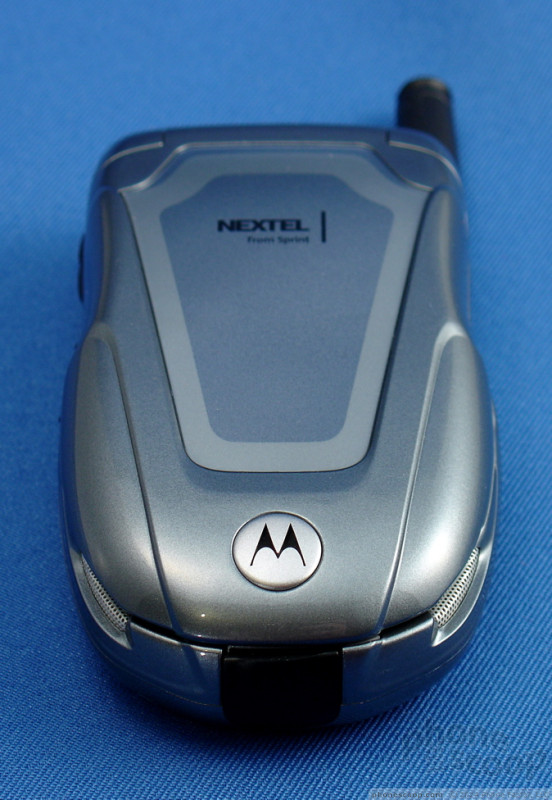

















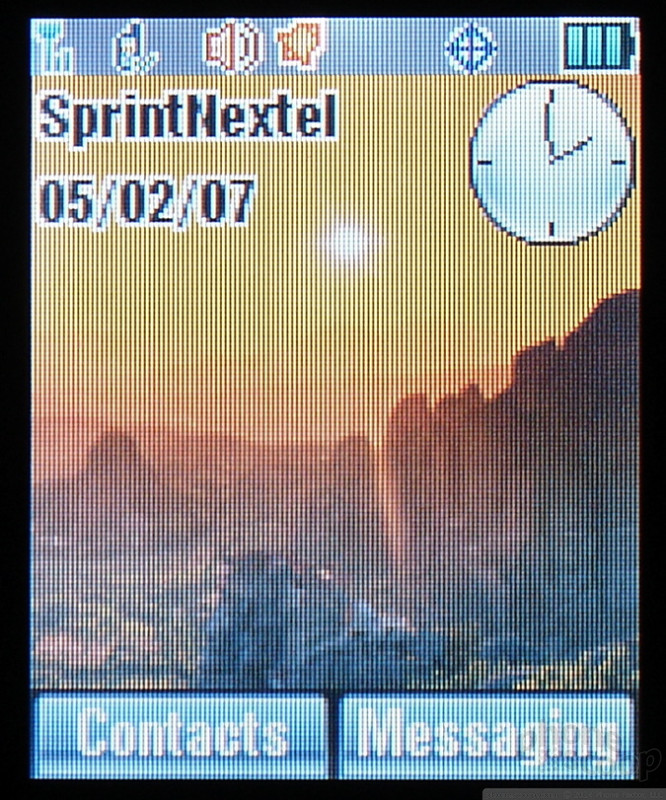


































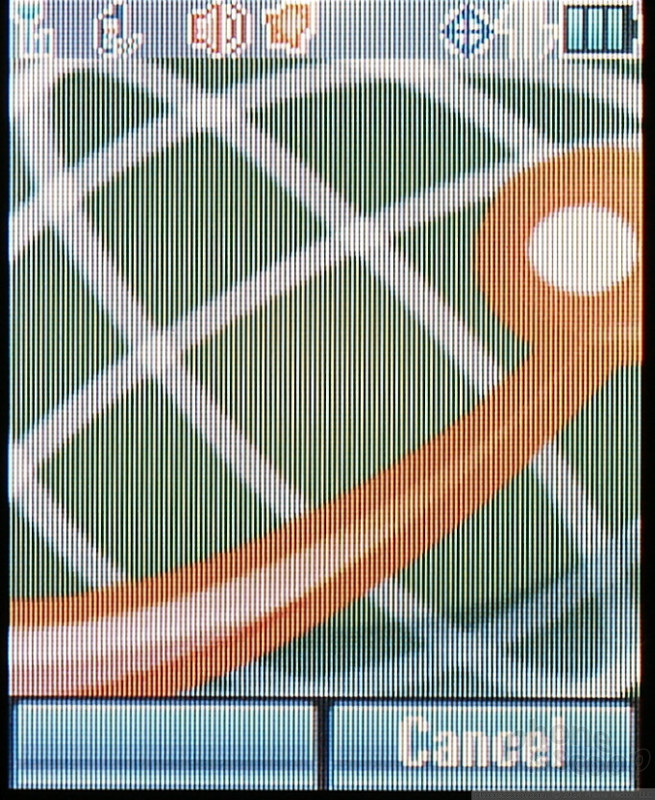




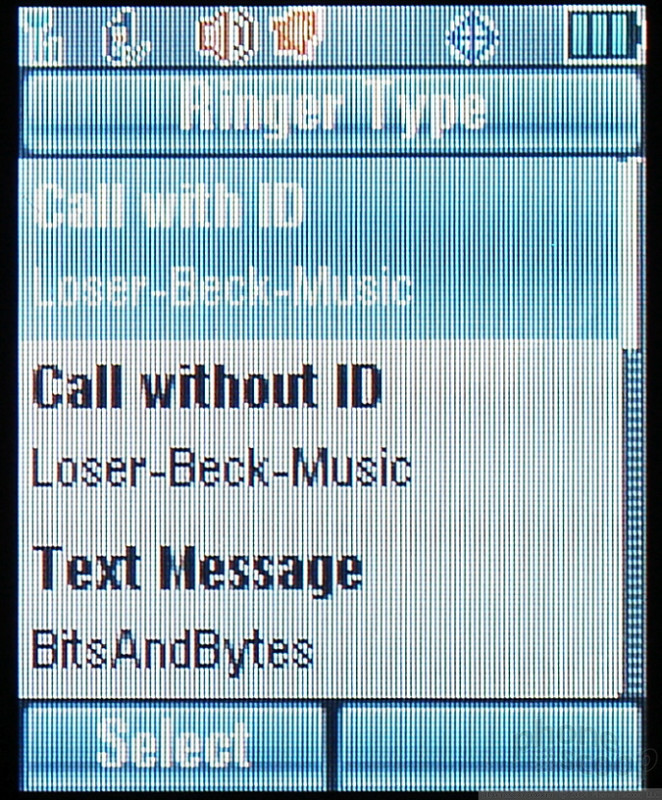























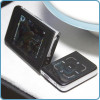 CES 2007 + iPhone
CES 2007 + iPhone
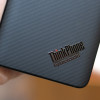 Hands On with the Lenovo ThinkPhone by Motorola
Hands On with the Lenovo ThinkPhone by Motorola
 iPhone 15 Series Goes All-In on USB-C and Dynamic Island
iPhone 15 Series Goes All-In on USB-C and Dynamic Island
 Qualcomm Expands Snapdragon 8 Series to Cover More Price Points
Qualcomm Expands Snapdragon 8 Series to Cover More Price Points
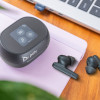 HP Intros "Pro-Grade" Earbuds
HP Intros "Pro-Grade" Earbuds
 Motorola ic402 Blend
Motorola ic402 Blend


